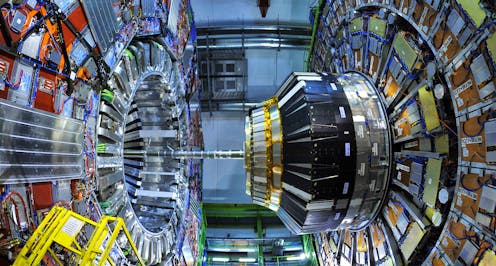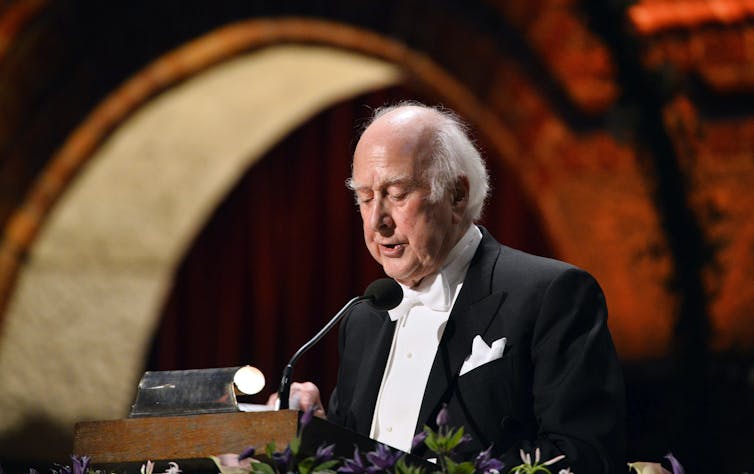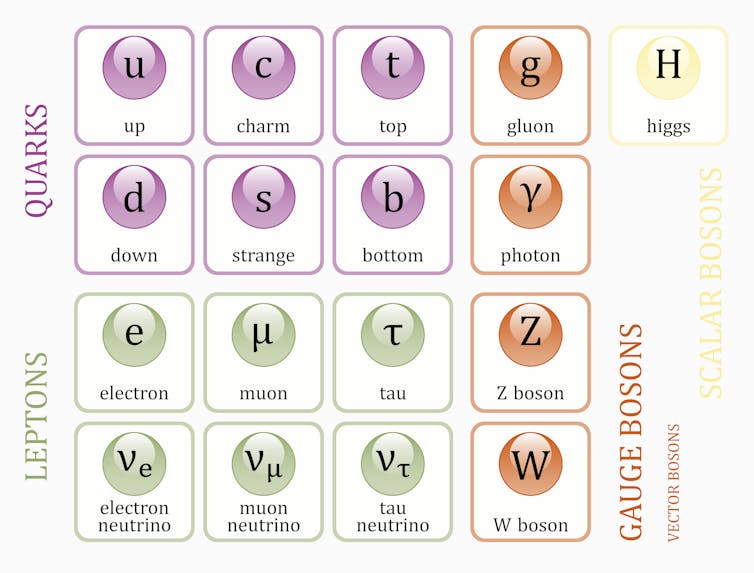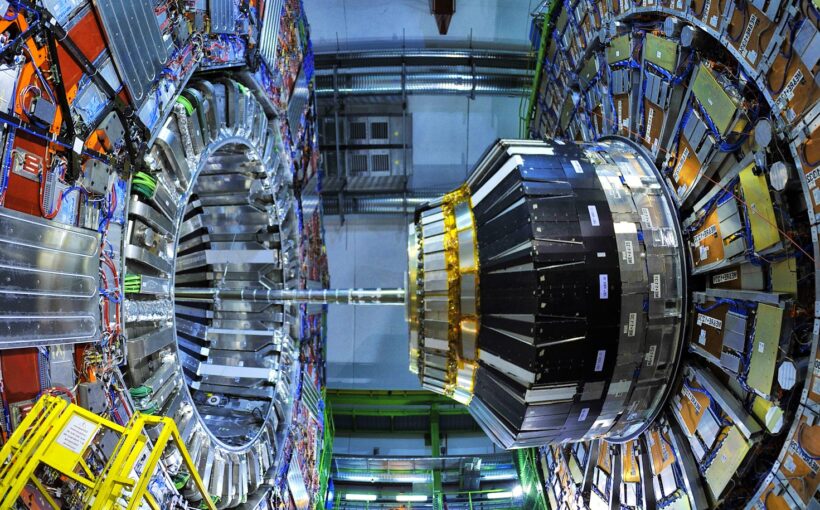
A giant of particle physics, Peter Wade Higgs, passed away at his home in Edinburgh on April 8 2024, having lived to 94 years. His unparalleled legacy, epitomised by the discovery of the Higgs boson, continues to profoundly shape the future of particle physics like no other discovery before it. This is the story of his legacy.
When Higgs was born in 1929, our understanding of matter was completely different. Physicists had developed a simple model of matter with three fundamental, or elementary, particles (those that can’t be broken down into smaller particles).
These were protons, which exist in the nuclei of atoms, electrons, which surround the protons and photons, packets of light that are responsible for a force of nature called the electromagnetic force.
During Higgs’ lifetime, an astonishing revolution would unfold, culminating in the creation of the Standard Model of particle physics, the most successful framework for understanding the building blocks of the universe in history.
Higgs would supply the heart to this theory. To understand the significance of Higgs’ work, it is necessary to understand the puzzle that nature laid out for physicists, beginning with the discovery of the neutron in 1932.
The neutron is a sub-atomic particle, a neutral partner of the proton, but slightly heavier. If ripped out of the atomic nucleus, a neutron decays into a proton and an electron in about ten minutes.
Explaining this decay required a new force and particle to mediate it (known as a force carrier). The new force carrier had to be many times heavier than both the neutron and proton, which the prevalent theory couldn’t explain.
According to this theory, force carriers had to be massless. This was the case for the force carrier for the electromagnetic force, the photon. Physicists call this feature of the theory a symmetry.
In physics, theories with more symmetry have fewer free parameters – fewer parts of the theory that can be changed. An additional parameter, such as the mass for a force carrier, would make the theory inconsistent.
Physicists knew that some particles had mass, but could not explain it. They needed to find the right way to break, or overcome, the symmetry in this theory, giving particles mass in a way that was compatible with everything known about the laws of nature. At the time Higgs began working on his ideas in the 1960s, the question of how elementary particles acquired mass was a central issue in physics.

In the early 1960s, the American physicist Phil Anderson noticed that the problematic symmetry in this theory could be overcome in superconductors (a material that conducts electricity with zero resistance) or in charged gas called plasma. However, for a theory that should explain mass, a viable solution couldn’t depend on a specific medium or material.
Later, Higgs and other theorists developed a model that overcame this difficulty. The others physicists were Gerald Guralnik, Carl Hagen, Tom Kibble, Robert Brout and François Englert. Englert would go on to share the 2013 Nobel prize in physics with Higgs.
The idea was simple in retrospect: a background field permeates all of space, creating the kind of medium for which Anderson’s idea worked. Higgs published his first paper on the topic in 1964. In 1966, he was first to predict that this “Higgs field” must also come with a “Higgs particle”. If discovered, it would prove that the Standard Model was a consistent theory of nature.
Yet the search for the Higgs boson turned out to be extraordinarily challenging. Higgs himself thought the question would not be settled in his lifetime. It took almost 50 years and the largest experiment ever built, the Large Hadron Collider (LHC) at Cern, to finally discover the Higgs boson. On July 4 2012, images of Higgs, moved to tears by the announcement, went around the world.

Our universe is fundamentally shaped by the unique properties of the Higgs boson. Similar to the solid, liquid and gaseous states of matter, the Higgs field corresponds to a phase of the universe that can be determined by measuring the way the Higgs boson interacts with other particles.
In the decade since its discovery, many of these interactions have been observed at the LHC. These results have raised new questions. The stability of the universe – its ability to persist in its present state more or less forever — seems to depend on the mass and interactions of the Higgs boson.
If current measurements of that particle are correct, the universe isn’t stable in its current state. This means that it could eventually undergo a transition to another form. The answers we uncover to this question could prove the Standard Model wrong.
Physicists also want to answer whether the Higgs field really explains all the masses of elementary particles as predicted by the Standard Model. For many Higgs bosons produced at the LHC, we can’t figure out what other particles they decay into. If we could, we could test more speculative theories linked to dark matter or other theories beyond the Standard Model.
To answer these questions, Europe, the US and China have proposed plans for building new particle colliders focused on studying the Higgs boson. Higgs’ legacy will be the experimental particle physics programme of the 21st century.
Higgs was a physicist from a different era. It would be unthinkable now for someone with his publication record to hang on in academia. He published only a handful of papers, almost all of which were authored by him alone. Today’s academic culture creates fierce competition and pressure to publish frequently.
Higgs acknowledged this in a 2013 interview: “It’s difficult to imagine how I would ever have enough peace and quiet in the present sort of climate to do what I did in 1964… Today I wouldn’t get an academic job… I don’t think I would be regarded as productive enough.”
This should be considered a warning. Breakthroughs require time to read and study work in other fields, such as the time Higgs spent to understand Anderson’s work. They require universities to create environments that prioritise time for research, rather than placing researchers in precarious positions dependant on the constant pursuit of grant funding.
It would be entirely fitting if Peter Higgs’ legacy, which transformed our understanding of particle physics, also transformed our approach to research.
![]()
Martin Bauer does not work for, consult, own shares in or receive funding from any company or organisation that would benefit from this article, and has disclosed no relevant affiliations beyond their academic appointment.



